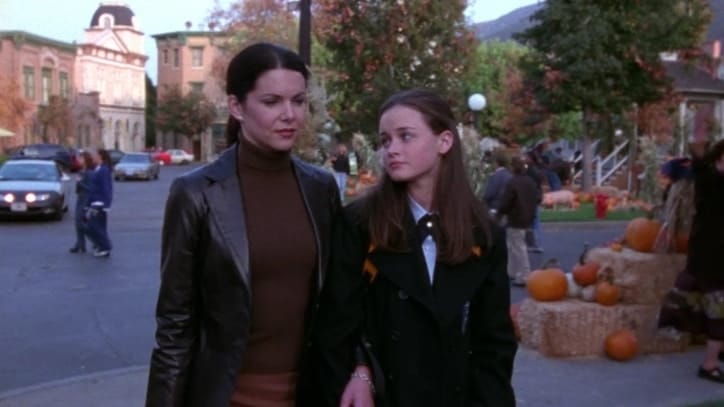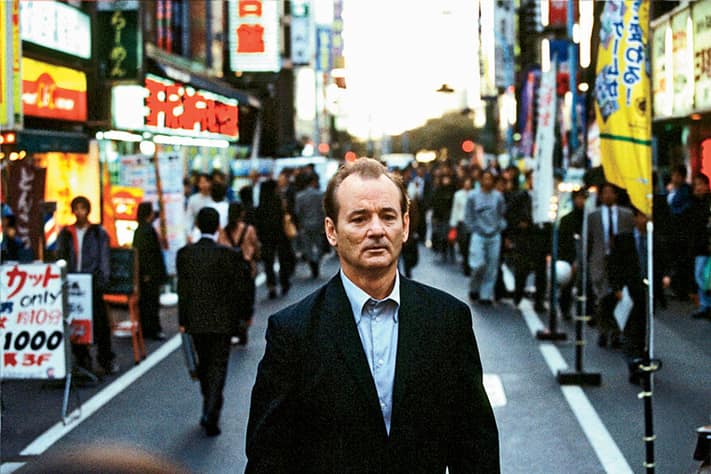Using ‘setting as a character’ is a phrase you’ll often hear in screenwriting circles. But what does it mean?
An easy way into this concept is to think of how our favorite movies wouldn’t be the same without their iconic settings. Think of Harry Potter without Hogwarts or The Shining without the Overlook Hotel. Here, settings function as characters in their own way, supporting the narrative and impacting the course of the storyline.
The notion of ‘character’ can be stretched to include more than only individuals within a story. In this case, the setting will be explored as a character. The setting has its own personality and adds to the story in a significant manner. In this way, it can’t not be seen as a character in its own right.
Settings are instrumental in creating a story world. That world comes with its inherent truths, limitations and rules. When we perceive setting as a character, we begin to see the very active role it often plays in movies and TV.
Table of Contents
Setting as a Character: The Importance of Setting
For the most part, any story you see will fall under a small selection of categories. What differentiates our stories are the ways we toy with the tools at our disposal. Every detail we include should be intentional, and the setting is no different.
Setting can dictate the tone of a story. In Taxi Driver, for example, we see 1970s New York City in all its filth and corruption – qualities which are catalysts for protagonist Travis Bickle‘s story arc. The tone of the setting mirrors the dark tone of the narrative.
Setting can tell us what types of characters will fill the world of our story. In a school setting, you will see educators and students. At a hospital, you will see healthcare workers and patients.
The setting can set limits on our stories and thereby challenge the characters. Outer space can be a destabilizing force, with lack of gravity hindering movement and unbreathable air placing survival-determinant time constraints on the characters. Or conversely, a vast desert landscape can drown the characters, making them lost and enforcing a searching narrative arc.
And in many situations, the setting can function as a character in itself, while serving the purposes outlined above. It has its own relationship with the characters and a relationship to the story’s themes and purpose.
Two Types of Setting as a Character
There are two primary ways to interpret what ‘setting as a character’ means.
- Geographic Area
- Locational Setting
Geographic Area
General geographic setting can speak greatly to the world of a story, and even more so when put in the context of the characters in the story.
In Lost in Translation, for example, the setting of Tokyo functions as a character because it drives the story by way of pushing the two main characters together.
- The foreign, unfamiliar aspect of their surroundings is a driving force in what connects these two people together.
- In a story about social alienation, the unfamiliarity of the setting to the two main characters only heightens this theme.
- Furthermore, Tokyo’s size and the scale of its population further heightens the idea of individual isolation. Busy cities often serve as the context for stories about isolation, marking the individual out amidst a sea of other people.
Even fictional settings can serve this purpose. Think of Gilmore Girls‘ Stars Hollow. The town comes to life as a whimsical world of its own thanks to its characters, who stand starkly apart from characters seen in Hartford, on the Yale campus, and other external locations. And the escapist setting is ultimately a key part of what makes the series so likeable and rewarding for so many people.
General types of geographic locations fall under this umbrella too. In almost any Hallmark holiday romance, the big city is a place to flee from. It represents stress, dissatisfaction, impurity, and a detachment from what life’s really about. Small town living is the antithesis: safe, loving, fulfilling, and joyful.
These types of locations in the context of Hallmark movies function as characters in a more obvious way. They’re each usually even accompanied by a human representative: the incompatible love interest or harsh boss in the city, and the irresistibly kind hunk in the small town, for example.

Locational Setting
Locational settings can narrow the playing field in a story and shift tone. A specific location can be a place where things evolve differently than they do in other locations within the same story. Different locations can have different rules and challenges, which the characters must overcome. In this way, they become active participants.
The Apartment is named after the location it’s set in.
- Without the apartment in question, there is no story. Within the apartment, a near-traumatic event occurs and a close bond develops.
- This bond gives the protagonist, Bud, a reason to develop a much-needed backbone, and in this way the apartment is directly responsible for the story’s central arc.
Locational setting types tend to be more overtly symbolic than the geographic area is in film and television. They can also be thrown in more flippantly, while the geographic area may be decided on more intentionally at the conception of a story.
That being said, it’s important to be conscious of the locations used in a script, so you’re not just placing a scene in the living room or a grocery store just for the sake of it.
Instead, think of the action and dramatic subtext within the scene. A scene depicting alienation could take place in an alienating environment for the character, for example. Or it could take place in a familiar setting, thus highlighting just how alienated that character is.
Setting Impacted by Characters
Just as the setting can function as a character, it can be shaped by characters and even reveal more about the characters themselves.
New York City in Taxi Driver
Taxi Driver is a great example of the setting being impacted by the lens of the main character. For how gritty New York City was during this era, this is exaggerated by Travis Bickle‘s disgust for the state of the world.
He sees what he wants to see – that he is correct in his distaste for the city – and therefore that is the New York City we see. The location we see is not New York City alone, but New York City in the eyes of Travis Bickle.
Moreover, the way the protagonist views the setting is important thematically. In Taxi Driver, Travis Bickle‘s view of the city helps justify his journey to becoming what he sees as its saviour. The setting becomes a reflection of the character in this sense, working in tandem with them.
This shows how the setting can be not only a character that exists on its own, but one that has a relationship with the characters, and protagonist within it.
The Room in Room
The titular room in Room also takes its own form because of the characters within it.
This comes out in the way young Jack affectionately bids goodnight – and, later, goodbye – to the many objects in the captive space, then finally to the room itself, calling it “Room”. Through this child, we the audience see the room as a safe haven, while it still functions as a prison for his mother. It takes on a dual personality, in this way.
In many movies, we watch someone we initially trusted turn out to be a bad guy. In others, we watch someone we suspected to be shady turn out to save the day. Through our characters, we the audience can perceive the setting, just as we would other characters, through a positive or negative lens that has the capacity to change.
In Room, this is taken to the extreme. The room is a prison in no uncertain terms. But as it’s all Jack knows, he sees it differently. An important message about perceiving context is conveyed – we know what we know and we make the most of our surroundings, even in the harshest of circumstances.
Sacramento in Ladybird
In Ladybird, Sacramento embodies the ‘setting as a character’ idea. Christine, aka “Ladybird,” spends most of the movie dying to get out of this city that she finds dull and soul-sucking. By the end, she falls back in love with her hometown, and she takes us on that journey with her.
This is a great example, too, of how the perception of the setting can track with a character’s arc. As Ladybird grows to accept herself for who she is throughout the film, she also accepts Sacramento for what it is. The audience, in turn, sees through her eyes the details that make Sacramento beautiful, much like how we would if Sacramento had been another character. In this way, it functions as such.
Ladybird’s relationship with Sacramento is also representative of her other relationships with the people in her life, namely her mother. At the start of the movie, she resents her mother much as she resents Sacramento. In her mind, the two are inseparable.
But by the end of the movie, she has turned a corner. In being away from Sacramento and her mother, she comes to value both more. Again, the journey shows how much the setting is more than just the setting, it’s reflective of Ladybird’s life, relationships and state of mind.
How to Realize Setting as a Character Within Your Screenplay
So it’s all well and good identifying the need to make your setting a character in your story. But how do you actually make this happen within your screenplay? There are three key ways to do this:
- Make sure your characters interact with the setting, particularly your protagonist.
- Be clear about your overall setting and the specific locations of scenes within the context of that setting.
- Convey the look, feel and even sound of the setting in the stage directions.
Firstly, we’ve talked above about how it’s important to have your characters impact the setting. This is the characters interacting with the setting. How do they feel about where they are? How does the setting affect their mood, behaviors and actions? They might talk about the setting or they might visibly react to it, for example.
Secondly, it’s important to always be clear about where the story is set overall as well as being specific about your locations as you move through the story. Aside from it being important thematically to label and lean into your setting, nothing frustrates beleaguered screenplay readers more than a lack of a clear setting indication. The setting is one of the most important aspects of giving a screenplay distinction.
And thirdly, the look, feel and sound of the setting can be conveyed through stage directions. This can be in reference to introducing the setting as a whole or in describing different locations as a part of that setting throughout the screenplay.
It’s important to not get lost in writing paragraphs on your setting’s specifics. But a well-crafted sentence attempting to sum up the setting can do wonders for creating an image in the reader’s mind and transporting them to that setting.
Making the Most of Your Setting

How can the notion of ‘setting as a character’ contribute to your story? You must weigh your decisions regarding location as heavily as you’d weigh any other decision in your script. Ask yourself why you are making that decision, and how it will impact your story.
Would your horror film make more sense set at a lake house in upstate New York? Or in a remote gas station off the interstate in the middle of the night? Or perhaps an apartment that already holds traumatic significance for the protagonist?
Consider juxtaposition. This can create opportunities for humorous or more layered context, shaped largely by the nature of the locations in which these moments are set.
Furthermore, consider stakes. How does the setting acting as a character amp up the conflict by elevating the stakes?
Perceiving setting as a character will challenge you to see how setting can serve your story, impact your character arcs, and make your story more interesting. It gives you endless opportunities to insert more meaning, more obstacles, and more personality into your script. Challenge yourself to view your setting as more than just a slug line.
Importantly, it will also make your script more visual. When you project conceptual details like tone, arc or emotions, through your location, those things can come to life. This makes the most of the cinematic nature of your story, utilizing the visual elements of a film to accentuate the characters, themes and overall story.
In Summary
‘Setting as a character’ is a way of articulating how your screenplay’s setting can do a great deal of legwork in conveying and representing your story’s themes, purpose and character arcs.
A setting can be more than just a geographical location, it can be a representation of your protagonist‘s state of mind, a summary of a key theme and a feature of your screenplay that it could not exist without.
There are three primary ways to realize ‘setting as a character’ within your screenplay.
Firstly, make sure your characters interact and have a discernible relationship with the setting. Secondly, always be clear about the story’s setting and the specific locations within that setting throughout the script. Thirdly, use stage directions within the screenplay to illustrate the setting, creating strong imagery in the reader’s mind.
This article was written by Ariana Skeeland and edited by IS Staff.
– What did you think of this article? Share It, Like It, give it a rating, and let us know your thoughts in the comments box further down…
– Struggling with a script or book? Story analysis is what we do, all day, every day… check out our range of script coverage services for writers & filmmakers.
Get *ALL* our FREE Resources
Tackle the trickiest areas of screenwriting with our exclusive eBooks. Get all our FREE resources when you join 60,000 filmmakers on our mailing list!

